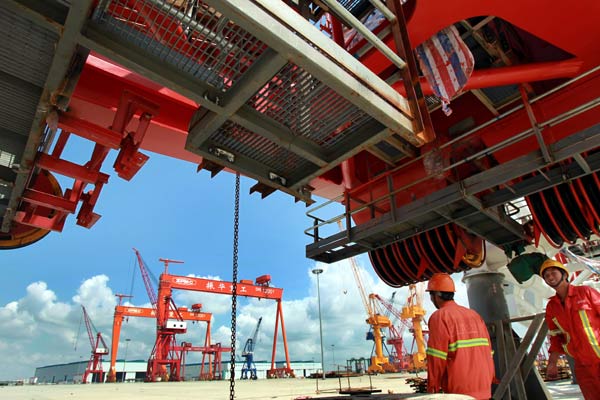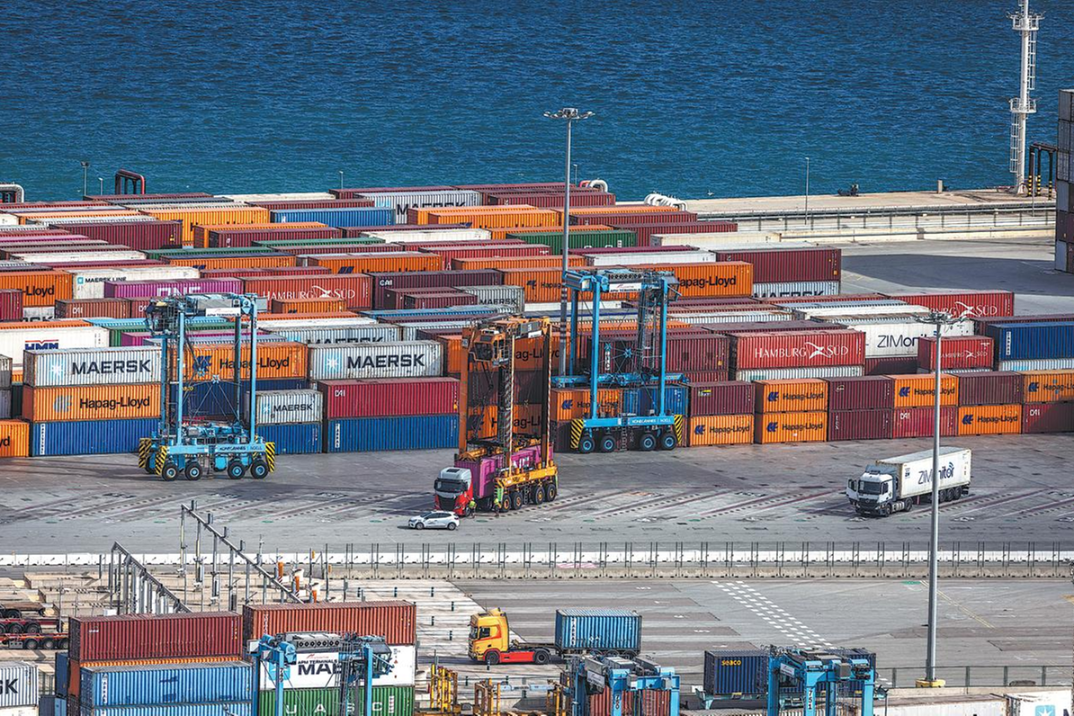Charges of port cranes threatening national security groundless


Although ZPMC has issued a statement rebutting the finding of a probe by US lawmakers last week that the cranes made by it for US ports threaten the United States' national security, the Shanghai-based crane maker's claims of innocence will likely fall on deaf ears.
The investigation by the House Committee on Homeland Security and House select committee on China found that among more than 200 Chinese-made cranes installed at US ports and related facilities, some of the cranes contain communications equipment with no clear purpose or record of their installation.
The US investigators found that the equipment installed "on more than one occasion" on the ZPMC cranes — cellular modems that can be used for remote communication — were not documented in any contract between US ports and Chinese crane maker ZPMC. The cellular modems, as Mark Green, the Republican chair of the House Homeland Security Committee, said in a statement to the media, can allow Beijing to "not only undercut trade competitors through espionage, but disrupt supply chains and the movement of cargo, devastating our nation's economy".
The Joe Biden administration last month announced plans to invest $20 billion in new US-made port infrastructure, including US-made cranes. But that is viewed as a political gesture linked to the US president's reelection campaign as that input is thought to be far from enough to replace the Chinese-made cranes, which account for nearly 80 percent of the cranes used at ports in the US.
What should be pointed out is that even if having modems embedded in the port cranes' operational systems "physically bypass" the ports' traditional IT security defenses, the US side has not found any evidence that the security opening has been tapped by hackers from any country.
Also, as the US side admits, a lot of machinery in the maritime and oil and gas sectors has such hardware as cellular modems that technicians use for remote maintenance, which actually guarantees the automation of the machinery.
The US investigators also acknowledged that when US port personnel went to China to inspect the cranes, the modems were already installed, which means the US port technicians were well aware of the existence of these devices on the cranes from the very beginning.
Nor have any instances been found "of malware or a Trojan-Horse-type software" being installed on the modems or other crane equipment, as John Vann, head of the US Coast Guard Cyber Command told lawmakers last month when the US Coast Guard raised security concerns over the Chinese-made port cranes. The just-concluded probe of the US lawmakers has also failed to find any evidence in that regard.
And what the US lawmakers did not mention is that the core intelligent parts of the Chinese-made port cranes are mostly made up of components from related companies in Germany, Sweden, the Republic of Korea and Japan, which also account for the majority of the remaining 20 percent of the port cranes in the US. To prove the objectivity of their probes, the US investigators should also determine whether these port cranes made for the US are also installed with the same kind of communications equipment that supposedly threatens the US' security. Otherwise using the worst-case scenario to smear Chinese-made port cranes, which actually have a clean track record of ensuring the efficient operation of the US' giant port system these years, seems the only purpose of their claim.


































